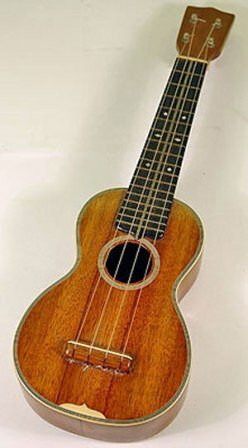Those who love to play guitar might consider one of these following facts about ukuleles really necessary to read, since the ukulele is partly similar to guitar. However, do you know what ukulele is? Ukulele is a member of the guitar family of instruments and generally employes for nylon or gut strings or four courses of strings. Originated in the 19th century, this instrument was first designed as a Hawaiian interpretation of the machete. It then gained great popularity elsewhere in the United States during the early 20th century, and from there spread internationally. To get to know more about this instrument, here are some other facts about ukuleles you might like.
Facts about Ukuleles 1: Tone and Volume
The tone and volume of the instrument varies with size and construction. Ukuleles commonly come in four sizes: soprano, concert, tenor, and baritone.
Facts about Ukuleles 2: Hawaiian Music
The Ukulele is commonly associated with music from Hawaii where the name roughly translates as “jumping flea”, perhaps because of the movement of the player’s fingers. Legend attributes it to the nickname of the Englishman Edward William Purvis, one of King Kalakaua’s officers, because of his small size, fidgety manner, and playing expertise.
Facts about Ukuleles 3: Instrument Taught
In the 1960s, educator J. Chalmers Doane dramatically changed school music programs across Canada, using the ukulele as an inexpensive and practical teaching instrument to foster musical literacy in the classroom. About 50,000 schoolchildren and adults learned ukulele through the Doane program at its peak.
Facts about Ukuleles 4: Construction
Ukuleles are generally made of wood, though variants have been composed partially or entirely of plastic or other materials. Cheaper ukuleles are generally made from ply or laminate woods, in some cases with a soundboard of an accoustically superior wood such as spruce.
Facts about Ukuleles 5: Strings
These instruments may have just four strings; or some strings may be paired in courses, giving the instrument a total of six or eight strings. The strings themselves were originally made of catgut.
Facts about Ukuleles 6: Sizes
Common types of ukuleles include soprano (standard ukulele), concert, tenor, baritone. Less common are the sopranino (also called piccolo or bambino) and bass ukelele. The soprano, often called “standard” in Hawaii, is the smallest and was the original size.
Facts about Ukuleles 7: Related Instruments
Ukulele varieties include hybrid instruments such as the guitalele (also called guitarlele), banjo ukulele (also called banjolele), harp ukulele, and lap steel ukulele. There is an electrically amplified version, the electric ukulele.
Facts about Ukuleles 8: Six-string Ukulele
Instruments with six or eight strings in four courses are often called taropatches, or taropatch ukuleles. They were once common in a concert size, but now the tenor size is more common for six-string taropatch ukuleles.
Facts about Ukuleles 9: Tuning
The most common tuning is C6-tuning: G4 C4 E4 A4. The G string is tuned an octave higher than might be expected. This is known as reentrant tuning something believed to originated in the Rajao, the Portuguese 5-string instrument that had DGCEA, with the D and G being high.
Facts about Ukuleles 10: Tiny Tim
Tiny Tim bought ukulele playing to the pop charts with his 1968 hit single “Tiptoe Through the Tulips”.
Hope you would find those ukuleles facts really interesting and useful for your additional reading.










 www.PortlandPayday.Loans
www.PortlandPayday.Loans